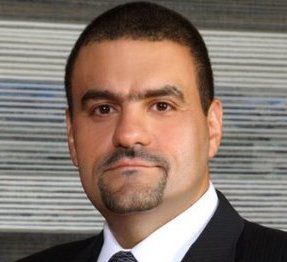“Despite the rising interest in accessing China assets from international investors, China’s ETF industry today is small,” Philippe El-Asmar, head of Asia beta strategies at JP Morgan AM, told FSA.
“There are $5trn globally in ETF assets under management, but just $100bn in China ETFs, predominantly passive equities products,” he said.
About $36bn are listed offshore, including the two biggest China ETFs, both managed by iShares.
Although 65% of China’s onshore ETF AUM is in equities, nearly one third (28%) is in money market fund ETFs, “a characteristic that is entirely unique to China”, said El-Ansar.
China’s under-representation in the global ETF market is anomalous and likely to be unsustainable because of the size of the the country’s equity and bond markets, which may surpass the US by 2030, according to IMF estimates.
El-Asmar believes the China ETF market is more or less where the US market was a decade ago. Many investors are still using ETFs primarily as trading tools, having not yet broadly embraced them as portfolio building blocks, and much of the ecosystem around regulation and market practice is still evolving.
Market constraints
But, for the time-being, the onshore ETF market is a minority game.
“There are only 15 ETF issuers and they focus on their particular niche (predominantly equity) products, such as the funds linked to the CSI 300 or CSI 500 indices, rather than offer a suite of products,” said El-Ansar.
Another significant obstacle is the structure of China’s equity markets.
Individual investors comprise about 80% of the A-share market, with domestic institutions making up around 15% and offshore funds less than 5%, according to El-Asmar.
This composition has two major effects on market performance and investors’ behaviour which militate against the adoption of passive products.
First, it creates substantial volatility with share prices sometimes fluctuating between boom and bust. Second, it provides professional fund managers with opportunities to earn alpha and outperform the benchmark CSI indices whose returns are determined by the momentum-driven stock-picks of unskilled private traders and investors. International investors also prefer to gain exposure to A-shares through actively managed products for the same reason.
In fact, the preference for active strategies to gain exposure to China’s domestic equity markets might be one reason for the failure of several Hong Kong-listed A-share linked ETFs to gain much traction.
Changing landscape
However, China’s regulators are signalling that they want more foreign participation in the country’s capital markets, for example through the removal of QFII [Qualified Foreign Institutional Investor] quota limits in September, and at the same time they are encouraging domestic institutional investors to increase their allocations to equities, according to El-Ansar.
“As institutional investors increase their share of the retail-dominated A-share market, then volatility should fall. When that happens there will likely be fewer opportunities for active funds to generate alpha, which should prompt more foreign investors with [MSCI or FTSE] benchmarks that include increasing weights to A-shares to choose passive products,” he added.
While China has yet to see the launch of any active ETFs, El-Asmar believes product innovation will be a major source of future growth. He expects to see an increase in not just passive but also smart beta and active ETFs.
“Once the market attracts a critical number of participants, then investors’ awareness and knowledge about the benefits of using ETFs as building blocks for asset allocation will grow, and eventually they will see the appeal of more sophisticated strategies,” he said.
The environment is already beginning to change, according to El-Asmar.
“More local players are entering the market, such as Tianhong Asset Management (owned by Alibaba), and critically, by continuing to open up its capital markets to foreign investors, China’s regulators are helping to create the conditions necessary for a successful ETF market,” he said.
Meanwhile, JP Morgan AM has “no immediate [ETF] product launch plans, but we are constantly looking at the potential to serve client needs in China’s quickly growing market,” he added.
The “wait-and-see” approach is shared by other international firms, including leading ETF issuers such as State Street Global Investors.

















